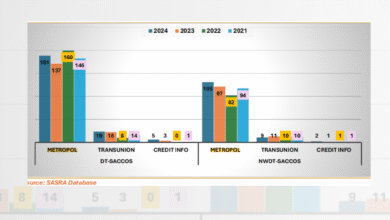
Government expenditure on education is projected to fall from Ksh.601.5 billion in the 2023/24 financial year to Ksh.594.2 billion in 2024/25, a 1.2 percent reduction.
This comes amid an expanding education landscape marked by a 38.3 percent increase in basic learning institutions, which rose to 129,463 in 2024, largely driven by the rollout of junior secondary schools.
The decline comes at a time when schools, spanning colleges and universities are expected to rise, according to the latest Economic Survey 2025.
The projected decline is mainly attributed to a 1.7 percent reduction in recurrent expenditure, which will contract to Ksh.566.1 billion. This component primarily covers salaries and daily operational costs.
In contrast, development expenditure is expected to rise by 9.8 percent to Ksh.28.1 billion, reflecting the government’s continued investment in infrastructure and learning facilities.
Despite the budget squeeze, Education Cabinet Secretary Julius Ogamba has assured stakeholders of the government’s commitment to timely disbursement of capitation funds.
Speaking earlier this week, CS Ogamba announced that approximately Ksh.21 billion would be released to public schools to support operations in the second term.
“We are working to ensure capitation for this term is released as soon as possible. The ministry does not allow any institution to levy charges outside government policy, even in times of delays,” said Ogamba.
He attributed the delay to competing priorities across government departments but maintained that the funds would be released imminently.
Also Read: Treasury Sets Aside 27.6% of Ksh.3.92 Trillion Budget for Education
Kenya’s capitation policy allocates funds to schools in three phases—50 percent in the first term, 30 percent in the second, and 20 percent in the third.
In March, schools received the balance of Ksh.14 billion for Term One.
Even so, concerns persist among school administrators regarding the adequacy of the allocated amounts. Some principals have flagged discrepancies between official student enrolment figures and capitation disbursements, leading to budget shortfalls and financial strain.
Meanwhile, student enrolment across the board continues to surge, with pre-primary enrolment having risen to 2.91 million in 2024 from 2.88 million the previous year. Primary and junior school enrolment grew by 3.2 percent to 10.73 million, while secondary school numbers climbed 5.2 percent to 4.32 million.
Technical and Vocational Education and Training (TVET) institutions recorded a significant 10.4 percent increase to 709,885 students.
At the university level, enrolment is projected to rise to 629,100 students from 579,000, as two new universities namely National Intelligence Research University and Tangaza University were granted charters, bringing the total number of universities to 72.
TVET institutions increased by 6.9 percent to 2,756, supported by the accreditation of new vocational training centres.






I was curious if you ever thought of changing the structure of your blog? Its very well written; I love what youve got to say. But maybe you could a little more in the way of content so people could connect with it better. Youve got an awful lot of text for only having one or two images. Maybe you could space it out better?
Keep up the good work, I read few content on this internet site and I conceive that your website is really interesting and has bands of great info .
Just wanna admit that this is handy, Thanks for taking your time to write this.
This is a very good tips especially to those new to blogosphere, brief and accurate information… Thanks for sharing this one. A must read article.
I view something genuinely interesting about your web blog so I saved to my bookmarks.
I conceive this site has got some rattling wonderful info for everyone :D. “Anybody who watches three games of football in a row should be declared brain dead.” by Erma Bombeck.
Thank you, I’ve recently been looking for information approximately this subject for a long time and yours is the greatest I’ve came upon till now. But, what about the conclusion? Are you sure in regards to the source?
Nice blog right here! Additionally your web site quite a bit up fast! What web host are you the usage of? Can I get your affiliate hyperlink in your host? I want my website loaded up as quickly as yours lol
Greetings! This is my first visit to your blog! We are a team of volunteers and starting a new initiative in a community in the same niche. Your blog provided us beneficial information to work on. You have done a wonderful job!
It’s onerous to search out educated folks on this subject, however you sound like you realize what you’re speaking about! Thanks
As I website owner I believe the articles here is rattling fantastic, thanks for your efforts.